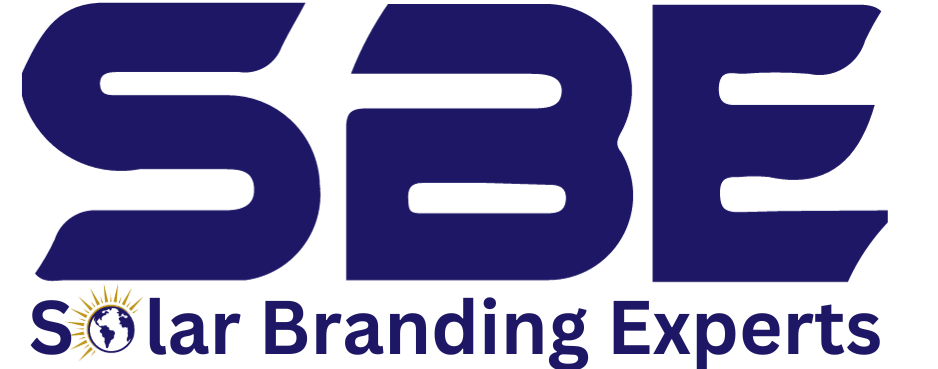The renewable energy industry is transforming rapidly, and solar companies play a pivotal role in this evolution. Yet, success in this growing market depends on more than offering quality products and services—it requires adopting the best solar marketing strategies that resonate with today’s audience. Traditional advertising alone won’t cut it; companies need to think creatively and employ diverse approaches to capture attention and drive action.
This guide will give you innovative ideas for solar business marketing strategies, presenting not only tried-and-true methods but also fresh, forward-thinking ideas to set your business apart.
Best Solar Marketing Strategies to Boost Your Business
Implementing the best solar marketing strategies is crucial for standing out. To truly boost your business, it’s important to focus on a combination of digital marketing, local engagement, and educational content. Leveraging SEO to increase your website’s visibility, creating informative blog posts about solar energy benefits, and utilizing targeted social media ads are all proven tactics. Additionally, offering valuable incentives such as financing options and referral programs can attract more customers. By focusing on personalized, data-driven approaches and staying ahead of trends, your solar business can enhance its visibility and attract loyal customers, ultimately driving growth.
1. Create Hyper-Localized Campaigns with Community Engagement
Hyper-local campaigns are an exceptional way to connect with your audience, but they can go beyond tailored ads. By immersing your brand in the local community, you not only increase visibility but also earn trust.
Additional Tips for Community Engagement:
- ✪ Sponsor local events: From eco-fairs to school programs, your presence at local gatherings shows your commitment to the community and boosts brand recognition.
- ✪ Host workshops or seminars: Organize events where homeowners can learn about solar panel installation, financing options, and energy savings, positioning your company as an educational resource.
- ✪ Support local charities: Align your brand with causes that resonate with your target audience, such as environmental conservation or sustainable development initiatives.
2. Offer Interactive Tools and Real-Time Data on Your Website
While solar savings calculators and AR tools are already valuable, you can go a step further by incorporating real-time data features.
What to add:
- ✪ Live solar energy dashboards: Show visitors how much energy your installed systems are generating in real-time.
- ✪ Customer testimonials linked to data: Display real customer results, such as energy savings or reduced carbon footprints, tied to their specific installations.
- ✪ Predictive analytics tools: Allow visitors to explore potential savings over five, ten, or twenty years, giving them a long-term perspective on their investment.
These additional features foster trust and engagement by offering transparency and practical insights.
3. Tap into Seasonal Trends and Urgency Campaigns
Solar marketing should align with the natural rhythms of your audience’s decision-making process. Using seasonal trends and urgency campaigns can elevate your impact.
How to integrate this approach:
- ✪ Seasonal promotions: Highlight how solar panels can maximize savings during sunny months or reduce energy bills in the winter when heating costs are high.
- ✪ Limited-time offers: Create campaigns around federal or state incentives that have approaching deadlines, encouraging customers to act quickly.
- ✪ Countdown campaigns: Use email marketing or social media ads featuring countdown timers to emphasize the urgency of acting now to secure savings.
4. Diversify Educational Content Across Platforms
Educational content is among the most effective ways of addressing misconceptions about solar energy, but the format matters just as much as the message. If used appropriately, it can become a successful marketing strategy for solar companies. Diversify your approach to ensure you’re reaching your audience where they spend the most time.

Content Formats to Explore:
- ✪ Short-form content: Create Instagram reels or TikTok videos featuring quick tips, like “3 Reasons Why Solar Panels Increase Home Value.”
- ✪ Infographics: Post visually appealing graphics on platforms like Pinterest and LinkedIn that break down complex topics into digestible pieces.
- ✪ Interactive webinars: Offer live sessions where participants can ask questions about financing, installation, or tax incentives.
5. Integrate Video Marketing for Maximum Impact
If a picture is worth a thousand words, then a video is worth even more. Video marketing can amplify your efforts in ways traditional content cannot.
Ideas for video marketing:
- ✪ Customer installation stories: Document the process of installing panels on a homeowner’s property, showcasing the ease and benefits of going solar.
- ✪ Explainer animations: Use animations to visually explain how solar energy works, breaking down technical jargon.
- ✪ Live Q&A sessions: Host live streams on social media where your team answers questions in real time.
Videos not only increase engagement but also help your audience feel more connected to your brand.
6. Strengthen Referral and Loyalty Programs
Word-of-mouth referrals are among the most powerful tools in your arsenal. Loyal customers can become brand advocates if incentivized properly.
Enhanced Referral Strategies:
- ✪ Tiered rewards: Offer escalating benefits, such as a small reward for one referral and larger rewards for five or more successful referrals.
- ✪ Exclusive perks: Provide free system checkups, discounts on battery storage, or extended warranties to loyal customers who refer others.
- ✪ Community recognition: Highlight loyal customers and successful referrers on your social media or in newsletters to create a sense of exclusivity.
7. Harness the Power of Influencer Marketing
While influencer marketing is common in lifestyle and tech industries, it’s one of the underutilized and the best solar marketing strategies. Collaborating with influencers—particularly those focused on sustainability or green living—can expose your brand to new audiences.
How to implement:
- ✪ Micro-influencers: Partner with local influencers who have smaller but highly engaged followings.
- ✪ Content swaps: Allow influencers to showcase your solar solutions in exchange for you featuring their content on your channels.
- ✪ Joint campaigns: Work with influencers to co-create giveaways or contests that highlight your products or services.
8. Utilize Geofencing to Reach Potential Customers
Geofencing is a pioneering tool that allows you to target customers based on their physical location. It involves using geographic boundaries to initiate specific actions or content delivery on mobile devices. Solar companies can use this technology to target people who visit home improvement stores, sustainability expos, or neighborhoods with high energy costs.
Execution ideas:
- ✪ Deliver mobile ads with messages like “Thinking of solar? Save up to 30% on energy bills with [Your Company Name].”
- ✪ Use geofencing to send promotional offers to attendees of local eco-events.
- ✪ Target customers who frequent competitors’ stores to showcase why your services stand out.
9. Highlight Sustainability Metrics with Tangible Impact
While many solar companies emphasize cost savings, sustainability benefits often go underrepresented. Consumers increasingly want to know how their choices contribute to environmental goals.
What to showcase:
- ✪ Tons of CO2 emissions avoided by installing your panels.
- ✪ Equivalent metrics like the number of trees planted or cars taken off the road.
- ✪ Data visualization: Use charts or graphics to illustrate cumulative impacts for all your installations.
This approach not only informs but also appeals to eco-conscious customers who value transparency.
10. Develop Community Solar Programs
If your solar company hasn’t explored community solar programs, now is the time. These programs can serve as solar marketing strategies as they allow customers to invest in shared solar installations, making solar energy accessible to those who can’t install panels on their property.
Marketing strategies for community solar:
- ✪ Highlight affordability: Emphasize how customers can benefit from lower energy costs without upfront installation expenses.
- ✪ Focus on inclusivity: Show how community solar brings renewable energy to renters, apartment dwellers, or low-income households.
- ✪ Build trust: Share stories from current participants about their positive experiences.
SBE’s Unique Approach to Solar Marketing
At Solar Branding Experts (SBE), we are aware of the evolving landscape of solar energy and bring bold, creative solutions to the table. Here’s how we help solar companies like yours:
- ✪ Deep Market Insights: Our team stays on top of industry trends, tailoring solar marketing strategies to resonate with your target audience.
- ✪ Custom-Tailored Campaigns: From geofencing to blockchain, we offer bespoke solutions that go beyond cookie-cutter marketing.
- ✪ Sustainable Growth Focus: We align our efforts with your long-term goals, ensuring both immediate results and future scalability.
- ✪ Collaborative Partnership: We see ourselves as an extension of your team, delivering support and expertise to maximize your ROI.
Conclusion
The solar industry is at an exciting crossroads, with endless opportunities for growth and innovation. By adopting cutting-edge solar marketing strategies like geofencing, blockchain transparency, and influencer collaborations, your company can secure a dominant position in this booming market.
At SBE, we’re ready to take your solar marketing to the next level with strategies proven by the best and tailored to your unique needs. Contact us today to start your journey toward solar success!
FAQs
1. How can augmented reality (AR) improve my solar marketing?
AR technology can help potential customers visualize how solar panels will look on their rooftops before making a commitment. This interactive approach makes the customer experience more engaging and personalized.
💎 Offer virtual rooftop installations using AR apps to make decision-making easier.
💎 Increase customer confidence in their purchase by letting them see the results firsthand.
2. How can I use influencers to promote my solar business?
Collaborating with eco-conscious influencers or sustainability advocates can help amplify your brand’s message.
💎 These influencers already have a loyal, engaged following that values sustainability.
💎 Their endorsement can build trust and expand your reach in a way traditional advertising can’t.
3. What is a “Green Home Assessment” and how can it boost my business?
A Green Home Assessment tool allows homeowners to assess the overall sustainability of their home, including solar power, insulation, and energy-efficient appliances.
💎 Position your company as a comprehensive sustainability expert by offering a holistic assessment.
💎 Provide personalized solar recommendations based on the results, making the decision to go solar more approachable for your clients.
4. How can educational campaigns enhance my solar marketing?
Launching solar-first educational campaigns that dive into the science, long-term savings, and environmental impact of solar energy can help demystify solar power for customers.
💎 Use formats like interactive infographics, explainer videos, or even short workshops to make complex information more digestible.
💎 Provide real-world examples and case studies of customers who’ve benefited from solar installations.
5. What is a Solar Challenge, and how can it benefit my marketing efforts?
Hosting a Solar Challenge for local communities can engage people and encourage them to adopt solar energy.
💎 Organize competitions to see which community can reduce their carbon footprint the most or install the most solar panels.
💎 Offer rewards or incentives to participants, creating excitement and social proof for your business.




